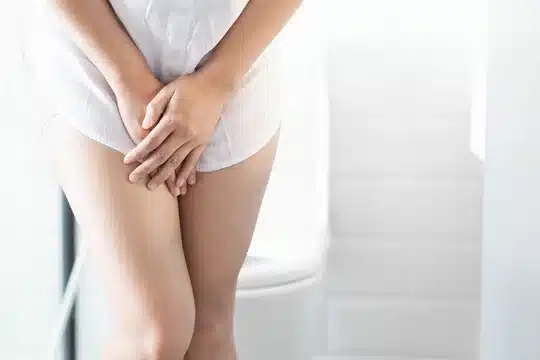Incontinence, or the accidental leakage of urine, is a common and frustrating condition thought to impact nearly 25 million adults in the United States alone. Ranging from small leaks when laughing or working out to completely emptied bladders when the urge hits, episodes can happen infrequently or multiple times per day.
While various at-home pads and absorbent products help manage embarrassing accidents, truly treating incontinence requires advanced medical options tailored to individual causes and case severity. If you find your active lifestyle repeatedly interrupted by leaks and constantly locating bathrooms, discovering how to treat incontinence is likely a top priority.
What Type of Incontinence Do You Have?
A critical first step in treating bothersome bladder leakage involves identifying what type of incontinence you’re experiencing so proper therapy can be selected. After tests determining if any underlying conditions may contribute to accidents, the three general classifications include:
- Stress Incontinence – Urine leaks out when pressure is placed on the bladder by actions like coughing, sneezing, exercising or heavy lifting
- Urge Incontinence – Sudden, intense urges to urinate take hold, leading to accidental voiding of the bladder
- Overflow Incontinence – The bladder does not empty fully, causing consistent dribbling leakage
Doctors determine patterns of urine loss and order urine flow studies or bladder scans to categorize a patient’s specific incontinence variation, case severity, and contributing factors influencing options to treat it.
Lifestyle Changes and Behavioral Therapies
Bladder Training
Bladder training involves following a strict schedule for bathroom visits to regain control over urination frequency. Patients start by scheduling bathroom visits at longer intervals than usual, such as every 1-2 hours. Over time, they gradually extend the time between scheduled bathroom visits, to reach a normal interval of every 3-4 hours. This allows the bladder to expand slowly and eventually restore normal function.
Pelvic Floor Muscle Exercises (Kegels)
The pelvic floor muscles support the bladder and bowel. Kegel exercises target these muscles by contracting and relaxing them repeatedly. This strengthens the muscles over time, providing better support for the bladder and increasing urinary control. Patients are instructed to tighten the muscles used to stop urine flow during scheduled sessions every day.
Apps and devices that track the number of reps can help with routine practice. Gradually increasing the duration of contractions improves efficacy.
Dietary Modifications
Certain foods and drinks can irritate the bladder, worsening the urgency and frequency of symptoms. Limiting caffeine, alcohol, carbonated drinks, artificial sweeteners, acidic foods like tomatoes and citrus, and spicy foods allows the bladder lining to heal. This alleviates inflammation that causes involuntary contractions and the subsequent urge to urinate frequently. A food journal can help identify personal triggers to limit.
Medications
- Anticholinergics: These medications block nerve signals that trigger bladder muscles to contract. Preventing involuntary bladder contractions enables the storage of more urine. Some side effects like dry mouth, constipation, and blurred vision can occur. Oxybutynin and tolterodine are commonly prescribed anticholinergic agents.
- Alpha-blockers: Alpha-blockers relax the bladder neck muscles and muscle fibers of the prostate gland in males. This prevents spasms and allows urine to pass more easily. Tamsulosin and terazosin are commonly used to treat urination issues in older males with enlarged prostates.
- Topical Estrogen: Low doses of estrogen in vaginal creams and tablets can help strengthen the urethra, bladder, and vaginal tissues. This increases the muscular support needed for urinary control. Topical administration prevents systemic side effects of hormone therapy.
Advanced Non-Surgical Options
Electrical Stimulation
Mild electrical pulses stimulate nerves that control the bladder and pelvic floor muscles. Signals can trigger contractions to strengthen weak muscles, reducing leakage and urinary frequency. They also inhibit nerve signals that communicate urgency or trigger involuntary bladder contractions.
Electrical stimulation retrains pelvic nerves and muscles for improved function and continence. Those with stress and urge incontinence often see substantial symptom relief.
Biofeedback Techniques
Biofeedback involves using sensors on the body that relay information to patients in real time, such as muscle tension or bladder pressure. This makes patients aware of nerves and muscles and provides visual feedback on how to control them effectively.
Biofeedback sessions are paired with exercises like Kegels to gain conscious control over muscle contractions. Over time, patients learn how to regularly activate the correct muscles that prevent leakage and control urgency signals from the bladder.
Surgical Options
Sling Procedures
Sling surgery involves placing a hammock or sling-like device under the urethra or bladder neck to provide extra support. This prevents leakage from physical activity and creates closure of the urethra despite increases in abdominal pressure from actions like coughing, sneezing or lifting heavy objects. Slings can be made from patient tissue or synthetic mesh materials.
Bladder Neck Suspension
This surgery employs stitches and sutures or graft materials to lift and support weakened or damaged tissues at the bladder outlet and urethra. Suspending prolapsed structures recreates the proper anatomy needed for urinary sphincter control. This repair prevents leakage with increases in intra-abdominal pressure.
Artificial Urinary Sphincter
For those with severe urinary incontinence not improved by other therapies, an artificial urinary sphincter can be surgically implanted. This medical device mimics normal sphincter function to control flow out of the bladder. It involves placing an inflatable silicone cuff around the urethra that the patient can manually open via a pump placed in the scrotum or labia majora to void urine when needed.
Conclusion
Treating incontinence effectively requires a comprehensive approach, combining medical interventions with lifestyle changes. Whether opting for medication, surgery, or other therapies, it's important to work closely with a healthcare provider to choose the right treatment plan.
With the right strategies, individuals dealing with incontinence can experience improved quality of life and increased comfort in their daily activities.

